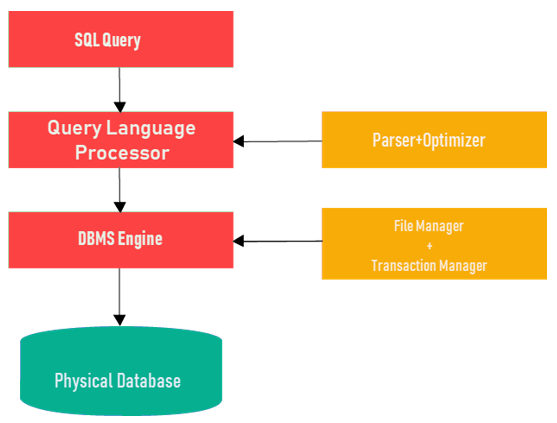SQL Tutorial for Beginners: Learn SQL in 7 Days
- Details
SQL Tutorial Summary
What Should I Know?
The course is designed for SQL beginners. No prior DB experience is required.
SQL Syllabus
Database Fundamentals
| Tutorial | What is a Database? Definition, Meaning, Types, Example |
| Tutorial | What is SQL? Learn SQL Basics, SQL Full Form & How to Use |
| Tutorial | MySQL Workbench Tutorial & MySQL Introduction |
Database Design
| Tutorial | Database Design Tutorial: Learn Data Modeling |
| Tutorial | What is Normalization? 1NF, 2NF, 3NF, BCNF Database Example |
| Tutorial | What is ER Modeling? Learn with Example |
SQL Basics
| Tutorial | MySQL Create Database, Tables, Data Types |
| Tutorial | MySQL SELECT Statement with Examples |
| Tutorial | MySQL WHERE Clause with Examples - AND, OR, IN, NOT IN |
| Tutorial | MySQL INSERT INTO Query: How to add Row in Table (Example) |
| Tutorial | MySQL DELETE Query with Example |
| Tutorial | MySQL UPDATE Query with Example |
Data Sorting
| Tutorial | ORDER BY in MySQL: DESC & ASC Query with EXAMPLE |
| Tutorial | SQL GROUP BY and HAVING Clause with Examples |
| Tutorial | MySQL Wildcards Tutorial: Like, NOT Like, Escape, ( % ), ( _ ) |
| Tutorial | MYSQL Regular Expressions (REGEXP) with Syntax & Examples |
Functions
| Tutorial | MySQL Functions: String, Numeric, User-Defined, Stored |
| Tutorial | MySQL Aggregate Functions Tutorial : SUM, AVG, MAX, MIN , COUNT, DISTINCT |
Must Know Stuff!
| Tutorial | MySQL IS NULL & IS NOT NULL Tutorial with EXAMPLES |
| Tutorial | MySQL AUTO_INCREMENT with Examples |
| Tutorial | MYSQL - ALTER, DROP, RENAME, MODIFY |
| Tutorial | MySQL LIMIT & OFFSET with Examples |
Most Dreaded Topics!
| Tutorial | MySQL SubQuery Tutorial with Examples |
| Tutorial | MySQL JOINS Tutorial: INNER, OUTER, LEFT, RIGHT, CROSS |
| Tutorial | MySQL UNION - Complete Tutorial |
| Tutorial | Views in MySQL Tutorial: Create, Join & Drop with Examples |
| Tutorial | MySQL Index Tutorial - Create, Add & Drop |
What Next!
| Tutorial | Your First Application using MySQL and PHP |
| Tutorial | Oracle MySQL 5.6 Certification with Study Guide |
| Tutorial | SQL vs MySQL: What's the Difference? |
| Tutorial | 20 Best SQL (Database) Management Tools |
| Tutorial | 70 Best SQL Certification Courses |
| Tutorial | 14 BEST SQL Books |
| Tutorial | SQL Cheat Sheet |
| Tutorial | Top 50 SQL Interview Questions and Answers |
| Tutorial | SQL Tutorial PDF: Basics PDF for Beginners |
What is a DBMS?
A database management system (DBMS) is a software used to store and manage data. It guarantees the quality, durability, and confidentiality of information. The most popular type of DBMS are Relational Database Management Systems, or RDBMSs. Here, the database consists of a structured set of tables and each row of a table is a record.
What is SQL?
Structured Query Language (SQL) is the standard language for data manipulation in a DBMS. In in simple words its used to talk to the data in a DBMS. Following are types of SQL Statements
- Data Definition Language (DDL) allows you to create objects like Schemas, Tables in the database
- Data Control Language (DCL) allows you to manipulate and manage access rights on database objects
- Data Manipulation Language (DML) is used for searching, inserting, updating, and deleting data, which will be partially covered in this SQL tutorial.
What is Query?
A Query is a set of instruction given to the database management system. It tells any database what information you would like to get from the database. For example, to fetch the student name from the database table STUDENT, you can write the SQL Query like this:
SELECT Student_name from STUDENT;
SQL Process
When you want to execute an SQL command for any DBMS system, you need to find the best method to carry out your request, and SQL engine determines how to interpret that specific task.
Important components included in this SQL process are:
- SQL Query Engine
- Optimization Engines
- Query Dispatcher
- Classic Query Engine
A classic query engine allows you to manage all the non-SQL queries.
SQL Optimization
Knowing how to make queries is not too difficult, but you need to really learn and understand how data storage works, and how queries are read in order to optimize SQL performance. Optimizations are based on two key factors:
- Making the right choices when defining the database structure
- Applying the most appropriate methods to read the data.
What will you learn in this SQL Course?
This SQL basics tutorial is designed for anyone planning to work with databases, especially in the roles of system administrators and application developers. The tutorials help beginners learn the basic SQL commands, including SELECT, INSERT INTO, UPDATE, DELETE FROM, and more. Each SQL command comes with clear and concise examples.
In addition to the list of SQL commands, the tutorial presents flashcards with SQL functions, such as AVG(), COUNT(), and MAX(). Along with these, quizzes help validate your basic knowledge of the language.
This SQL course will help you handle various aspects of the SQL programming language.
Why should you learn SQL?
SQL is an easy-to-learn language specifically designed to work with databases. There is a growing demand for professionals who can handle databases. Almost every big company is using SQL. It is widely used in various sectors like ticket booking, banking, social media platforms, data sharing, eCommerce, etc., so there are vast opportunities available for the SQL developer.
